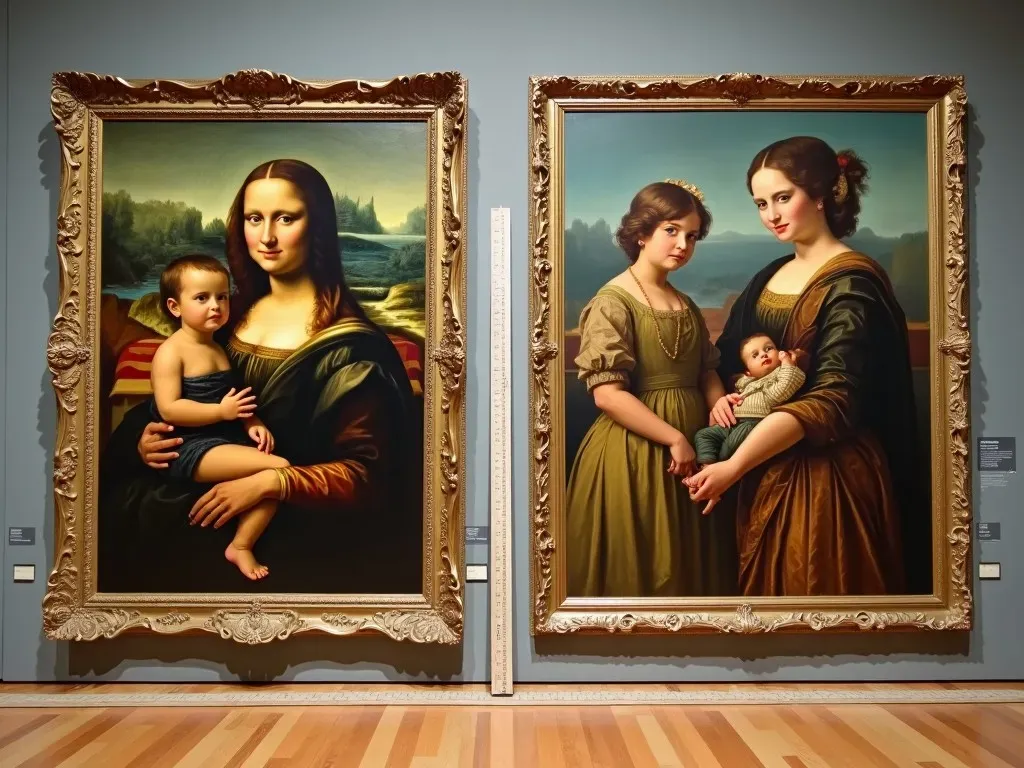The largest paintings in the world vary greatly in scale, technique, and intention but share a common trait: they astound viewers with their size and artistry. From the largest oil paintings to the most expansive canvas creations, these artworks often serve as unique time capsules, representing their creators’ visions and historical contexts. In recent years, monumental pieces have captured public interest not only for their artistic merit but also for their ambitious undertakings.
The Record Holders: A Closer Look at the Largest Paintings
The title for the largest painting in the world is a competitive space, with new contenders emerging and existing artworks achieving new milestones. Here are some of the most noteworthy large-scale paintings:
| Painting Name | Artist | Dimensions | Completion Date | Location |
|---|---|---|---|---|
| The Journey of Humanity | Sacha Jafri | 17,000 sq ft (1,595.76 m²) | 2020 | Dubai, UAE |
| The Largest Painting | Hung Chi-Sung | 12,086.59 m² (130,099 ft²) | June 21, 2019 | Hualien, Chinese Taipei |
| The Great Mother Earth | Ðuka Siroglavic | 10,800 m² (116,000 sq ft) | February – July 2007 | Bol, Croatia |
| The Night Watch | Rembrandt | 12.4 x 14.4 ft | 1642 | Rijksmuseum, Amsterdam |
| Il Paradiso | Tintoretto | 22 x 9 m | 1592 | Doge’s Palace, Venice |
The Journey of Humanity — A Tennis Court-Sized Marvel
One of the most spectacular recent accomplishments in the art world is The Journey of Humanity by Sacha Jafri. This painting, which covers a staggering area of more than 17,000 square feet, was created during the COVID-19 lockdown in Dubai. Jafri aimed not just to create art but to use its sale to raise funds for children in need. Ultimately, the painting sold for a whopping $62 million at auction, validating the artistic and philanthropic intentions behind it.
The Largest Painting by a Single Artist
Hung Chi-Sung holds the Guinness World Record for the largest painting, which measures approximately 130,099 square feet. This massive work was completed in Taiwan and symbolizes the artist’s quest for reconciliation in a world often steeped in conflict.
The Dimensions of Greatness in Art
When discussing the largest paintings in the world, it’s crucial to consider what these dimensions translate to in space. Below is an illustration of how some of these gigantic artworks measure up to familiar sizes:
| Painting | Comparable Distance |
|---|---|
| The Journey of Humanity | About the size of 10 tennis courts |
| The Largest Painting | Roughly the footprint of 12,500 people |
| Il Paradiso | Equivalent to a large living room |
| The Night Watch | A significant wall space in museums |
Artistic Intent and Cultural Significance
Large-scale paintings often serve various cultural purposes. They can be nationalistic, addressing themes of identity and heritage, or they can aim to inspire action, as seen with Jafri’s work. These paintings not only demand physical space but also provoke thought and shouldering societal issues.
Historical Context
Throughout history, large paintings have often been used in political or religious contexts, signifying power or divine presence. Grand churches and state buildings commonly feature sizeable murals as expressions of authority, belief, or community.
- Religious Context: Many Renaissance artworks served to glorify religious figures.
- Political Statements: Modern graffiti often critiques political injustices.
- Community Engagement: Massive murals in urban areas foster a sense of belonging and empowerment among residents.
Frequently Asked Questions
What is the largest painting in the world?
The largest painting is by Hung Chi-Sung, measuring approximately 12,086.59 m² (130,099 ft²) and completed in Hualien, Taiwan, on June 21, 2019.
Who created the largest canvas painting?
Sacha Jafri is known for creating The Journey of Humanity, which is the largest canvas painting and measures over 17,000 square feet.
Can large paintings impact society?
Yes, large paintings can raise awareness about social issues, reflect cultural values, and serve as symbols of community identity.
Are there any large paintings that people can visit?
Yes, many large paintings are displayed in museums or public spaces. For example, The Night Watch by Rembrandt is housed in the Rijksmuseum in Amsterdam.
Where can I find more information about large paintings?
A comprehensive resource is the Guinness World Records website, which details records and achievements related to art and other sectors.
Expanding Horizons through Art
As we explore the largest paintings in the world, we reveal not just the scale of human creativity but also the depths of our shared emotional and cultural experiences. These large-scale pieces serve as reminders of the tremendous potential of art to shape narratives, invoke feelings, and spark change in an ever-evolving society.
The world of colossal paintings is a testament to human ambition and artistic vision, showcasing how creativity knows no bounds. From fundraising endeavors to expressions of socio-political commentary, these works will continue to intrigue and inspire across generations. The exploration of the largest paintings not only invites us to appreciate the artistic process but also challenges us to reflect on the enormity of our shared human experiences.
